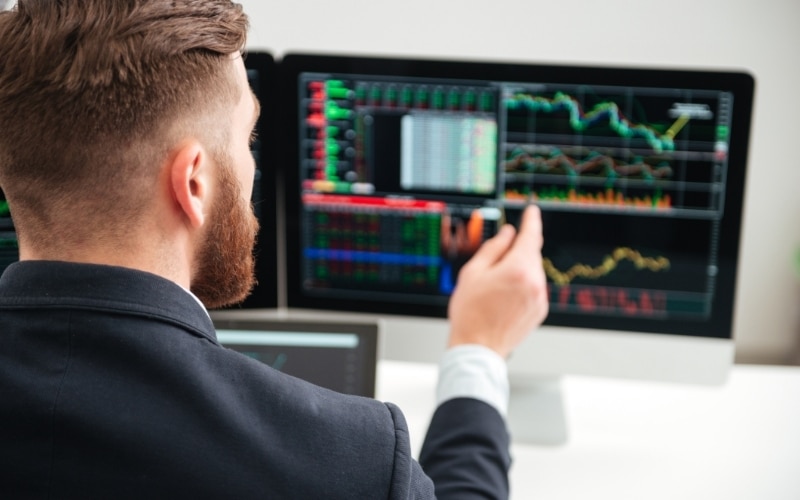
The 90/90/90 rule in the trading industry that states 90% of investors lose 90% of their money in the first 90 days also holds for traders at a professional level. Some of the mistakes still haunt advanced market participants for a long duration. While they are constantly journaling to remove errors, their past horrors add up to haunt them. Our article will cover all the trading faults that pros make — and you should avoid them as a beginner or an amateur.
Examples of failures
Before diving into the mistakes, let us shed some highlight on the traders or institutions that have failed over time. The drawdown of a billion-dollar trader certainly makes it into the news.
- Andy Hall. One of the most noted oil traders is regarded as the “most successful oil trader of his generation” by Financial times in 2019. In 2017 the big boy had to close his central hedge fund Astenbeck after he incurred a series of losses that amounted to 30 percent.
- Bailey Coates Cromwell Fund. Euorhedge had given prominence to the Baile as one of the best new equity funds back in 2004. However, a year later, it saw its demise by reporting a series of losses due to bad bets on US stocks such as Morgan Stanley, Cablevision Systems, Gateway computers, and LaBranche. The overall $1.3 billion portfolios lost 20% value in a few months and led to the fund’s closure.
- Aman Capital. Overleveraging caused the hedge fund open by top derivative traders at UBS to be liquidated. In March 2005, the fund was left with $242 million in assets and soon announced through financial time, “the fund is no longer trading.” The leftover cash was distributed amongst the investors.
Top errors that professionals make
By avoiding all the top mistakes that professionals make, you can prevent failure.
Investing too much
Over-leveraging trades lead to bigger wins, but it can also mount to huge losses if the position goes against your favor. Many institutional traders have reported using more margin and ending up in the middle of nowhere. Some retail brokers offer up to 3000 times of cash to open up bigger sizes.
A trader who deposits $100 in their account with a leverage of 3000 can open positions worth three lots. Change in a single pip or 10 points will cause a $30 shift in your equity. Considering the volatility of markets, a three pip change happens in a matter of seconds, so the clear result is in front of you.
Holding trades
Holding your trading positions for too long against your strategy is a big no. Traders at Goldman Sachs, one of the big banks, advise against such practice at all costs. Consider the volatility and the price change of an asset to place targets and exits that are reasonable.
Holding your winners for a short time and losers for an extensive duration is termed the disposition effect. The analysis suggests that traders could increase their profitability only if they hold dear to trades in the positive territory.
Borrowing too much
Borrowing too much money is similar to overleveraging in the sense that you’re loaning cash. In this case, you take it from a person rather than a broker. The risks are significantly greater here as you are responsible for returning bucks and pay any interest if applicable. Tons of stories are available online where a trader borrows hundreds and thousands of dollars from his friends or family and then loses them all.
Stop-loss free trading
Bloomberg’s single report that China was halting the purchase of US treasuries back in 2018 led to a significant drop in equities and an increase in the VIX index. Traders who were long lost lots of money in the process, and those trading without any stop-loss system were down even more.
Your predetermined exit point is the only way to save a person from disaster. You may find news from wall street now and then about top investors who extended their stop losses or traded without them only to end up with a massive drawdown.
Overcomplications
Immense knowledge about trading comes at a risk of complicating your trades. A trader can learn tons of different strategies out there and employ various chart indicators. It leads to the scenario where one tool screams to buy and the other to sell. Leading to confusion, a professional has to learn how to keep his learning horse under control.
How can you use proper risk management with bots?
Before buying a robot to help you in trading or use it for automated trades, make sure that it has a proper stop loss system. There are tons of EAs in the market that work via martingale, grid, or arbitrage strategies. To spot them out, you can peek at their trading history, if available, or the equity/balance charts.
Once you have a system with a stop loss functionality, only use a fixed amount of capital in the initial stages. Doing so will limit losses and have a positive effect on your psychic.
End of the line
Beginning your trading as a novice trader can pose some serious difficulties. Noting all the mistakes that professionals execute beforehand is helpful as the famous quote says, “Smart people learn from their mistakes, but the real sharp ones learn from the mistakes of others.” It might be the fastest way to become a professional and hold that place for eternity.








Leave a Reply